
Precious Moments: Mother & Son Chimpanzees Reunited
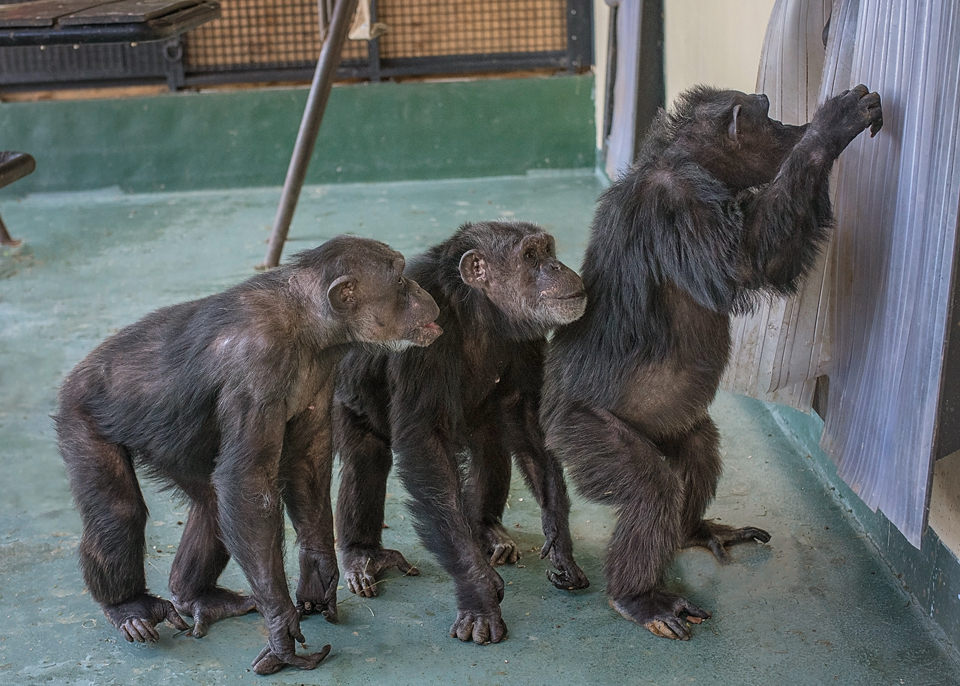

Precious couldn’t be bothered. There she sat, amidst a storm of flying, black-haired bodies. Fifteen chimpanzees swirled around her in a screaming frenzy of excitement; hugging, chasing, and fighting.
Precious was unmoved
She sat quietly in the middle and licked a pinecone smeared with tasty peanut butter. The drama could wait and she was going to enjoy her lunch.
Though her initial reaction didn’t convey it, this was a big
day for Precious, a 29-year-old former research chimpanzee now retired in
permanent sanctuary at Project Chimps. It was the first time her group of ten females
was united with a group of males in one room, after years of living in separated,
same-sex groups.
It was also a big day for the chimpanzee care team at
Project Chimps.
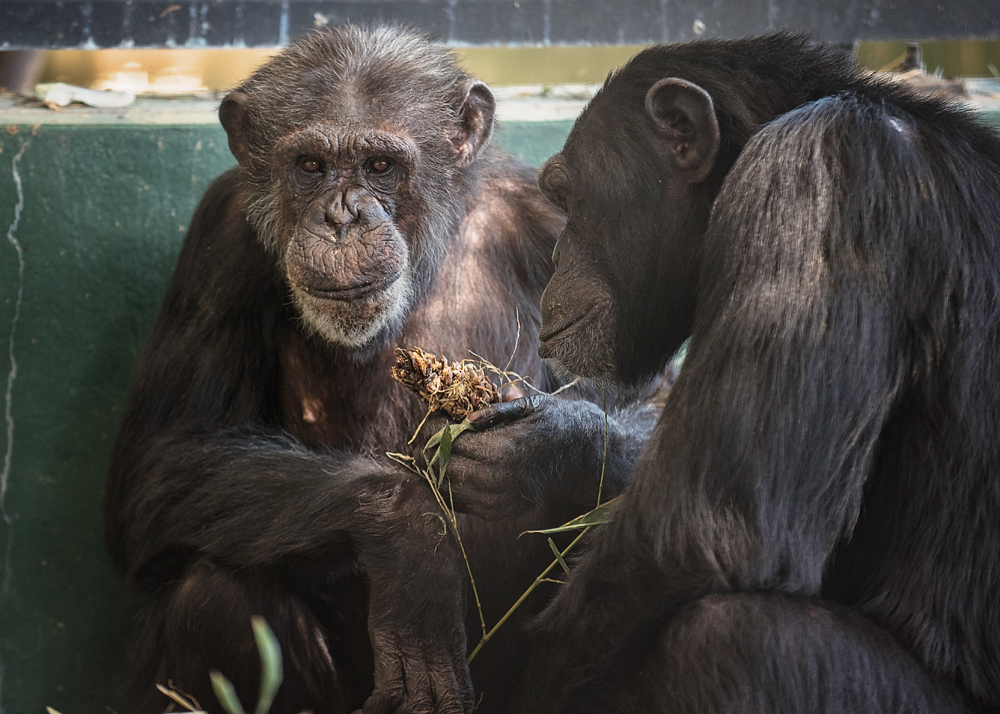
Chimps outdoors, together
“This is the day we most look forward to in sanctuary,” said Laura Mayo, Project Chimps’ Manager of Chimpanzee Care. “It’s so rewarding to see male and female chimpanzees reunited. We get to see them building new relationships and foraging together in the forest, as they would have if they had been born in the wild.”
Precious and the other chimps weren’t born in the wild. They were born and bred in the lab for research. There, they were separated by sex to prevent breeding. But that created an unnatural social structure for the chimps.
So, Mayo’s team is now working to bring males and females together to recreate a more natural chimpanzee society.
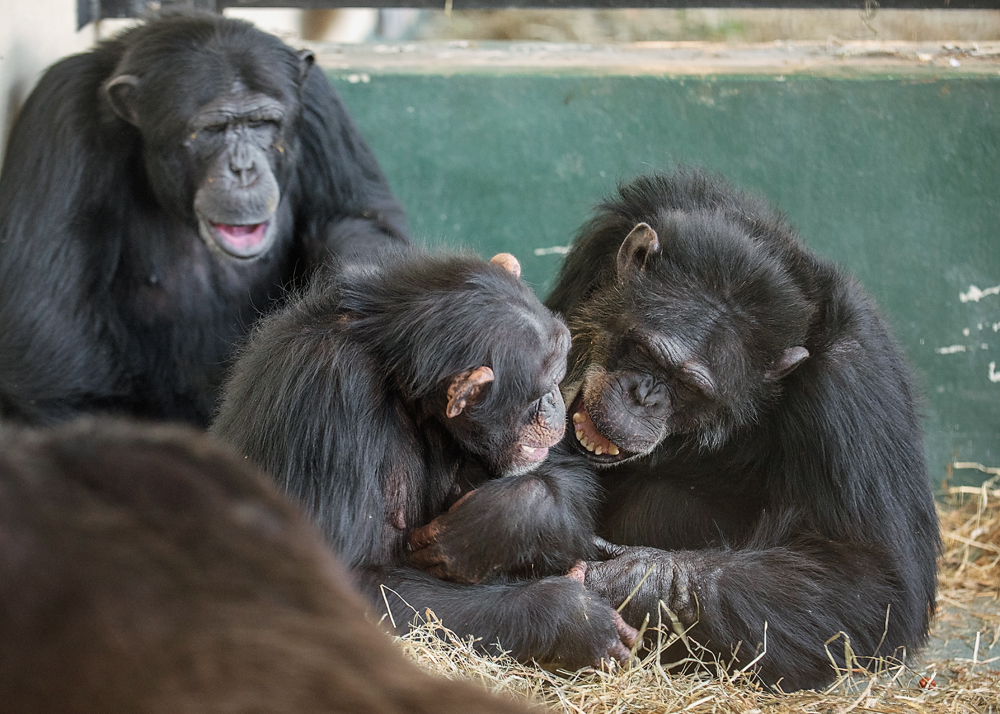
Living more like wild
chimps
Like that of humans,
individual chimpanzees come and go to form subgroups of varied sizes. Females tend to leave
their troop when they reach breeding age and seek out another troop, to avoid
inbreeding. The subgroups are part of a larger collective of up to 150
chimpanzees, that may unite or interact, for specific purposes.
At Project Chimps, a 236-acre sanctuary in the Blue Ridge
Mountains of north Georgia, Precious will live the rest of her days in a group
that now includes males Marlon, Arthur, Taz, Patrick, Josh and Quintin.
Eventually, her group may even have the choice to split up and make new friends
in other troops, as they might have in the wild.
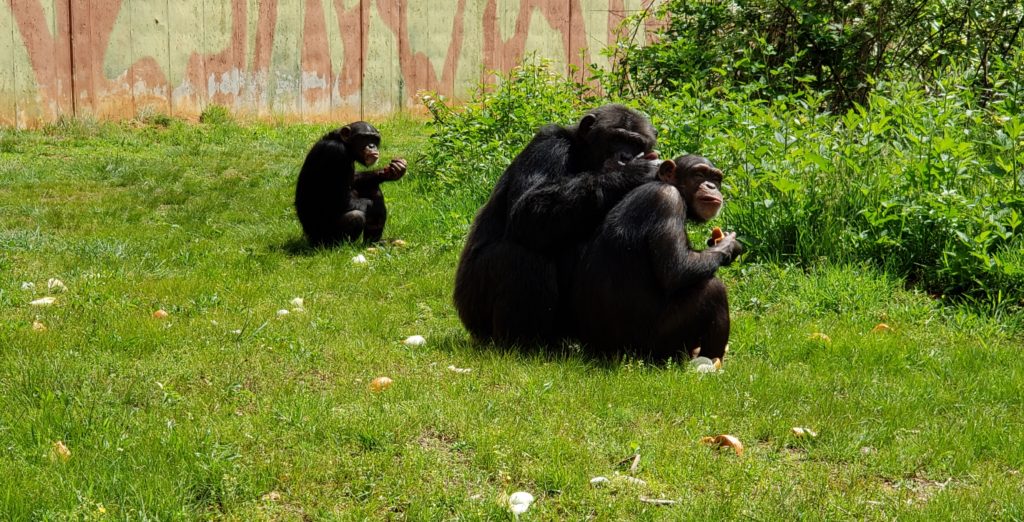
“Hello, Marlon!”
For now, Precious seems content to spend time with her new
friends - particularly, Marlon. On their dramatic first day together, the two
seemed to form a special bond. After the initial flurry of male and female
interactions, Precious set down her pinecone and approached Marlon.
Precious had met Marlon before during preliminary one-on-one
and small group sessions, but the two came together in a unique and special
way.
Eighteen-year-old Marlon has trouble regulating his
emotions, so this 16-chimp conflagration was particularly stressful for him.
Precious, who has progressive kidney disease, seemed to understand and embraced
Marlon to reassure him. Throughout the day, Marlon and Precious were seen
hugging and reassuring one another and that trend has continued, according to
Mayo.
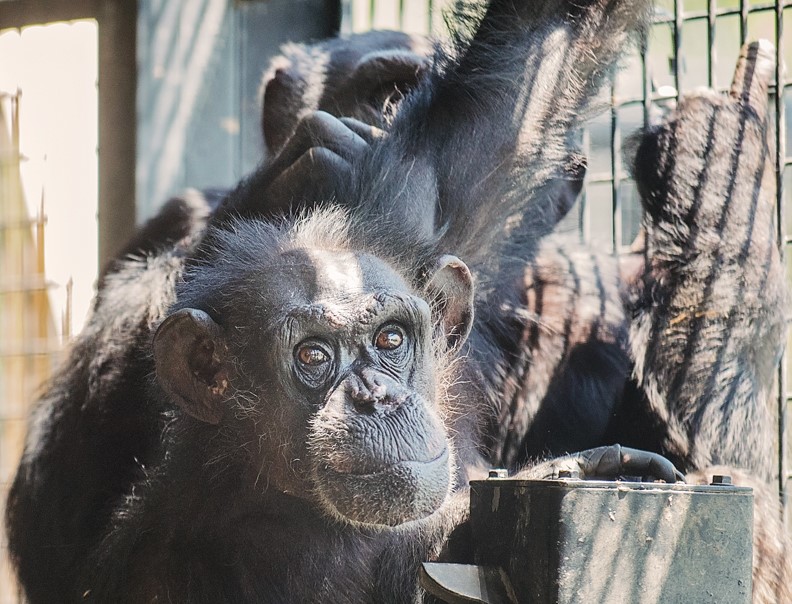
Making new friends
Many other new friendships were forged that day, whether
they will be lasting only time will tell. But the chimps have time – the rest
of their lives, in fact – to strengthen these bonds and sort out a new social
hierarchy, just as wild chimps would.
All 16 chimps now live together in Project Chimps’ Chimps
Ahoy Villa. It’s a large group enclosure that opens onto the sanctuary’s
forested, 6-acre habitat where the chimpanzees can roam, forest and play with
no caging overhead. Chimps Ahoy Villa was made possible by vegan beauty
entrepreneur, tattoo artist and animal lover, Kat Von D. She also named the
villa.
“Chimps once separated in the lab are now playing in a forest together thanks to the support of passionate animal welfare advocates like Kat Von D.”
- ali Crumpacker, Executive director, project chimps
Mother and son chimpanzees reunited
It was a big day for chimpanzees Jill and Arthur, too. The pair are mother and son. It’s likely that Jill, 29, and Arthur, 17, were separated in the lab at or shortly after Arthur’s birth.
When the two met, it seems that they may have recognized one
another.
“We can’t be sure, but they certainly reacted differently to one another,” said Brooke Allen, the chimpanzee caregiver supervisor who oversaw the group introductions with Mayo. “They were more interested in one another and demonstrated affiliative behavior right away,” Allen added.
Don’t I know you from
somewhere?
According to Allen, it may have been like a human running
into a childhood friend 30 years later and thinking, “don’t I know you from
somewhere?”
As Jill’s and Arthur’s relationship evolved, Allen and the
Project Chimps team observed Arthur grooming Jill, another affiliative behavior
that strengthens social bonds between chimps.
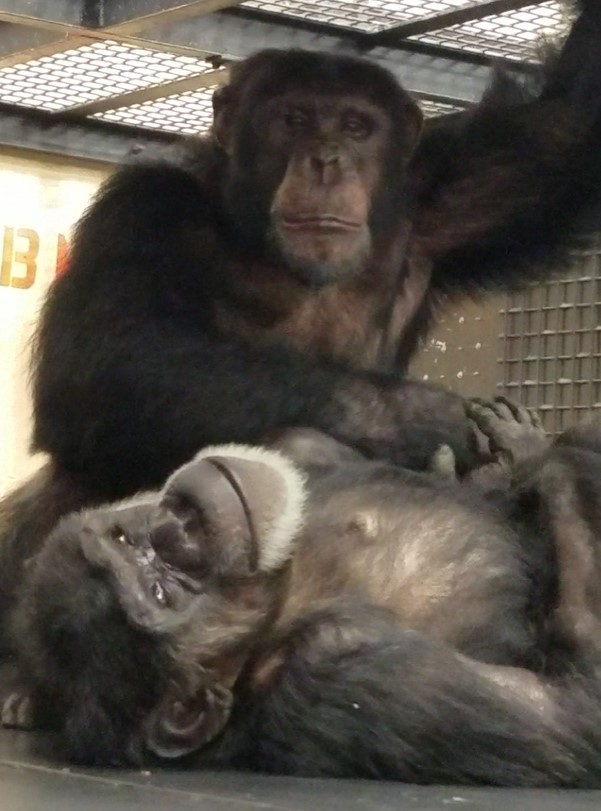
Arthur plays referee
Allen even observed Arthur refereeing a scuffle between his mother Jill and his new friend Krystal.
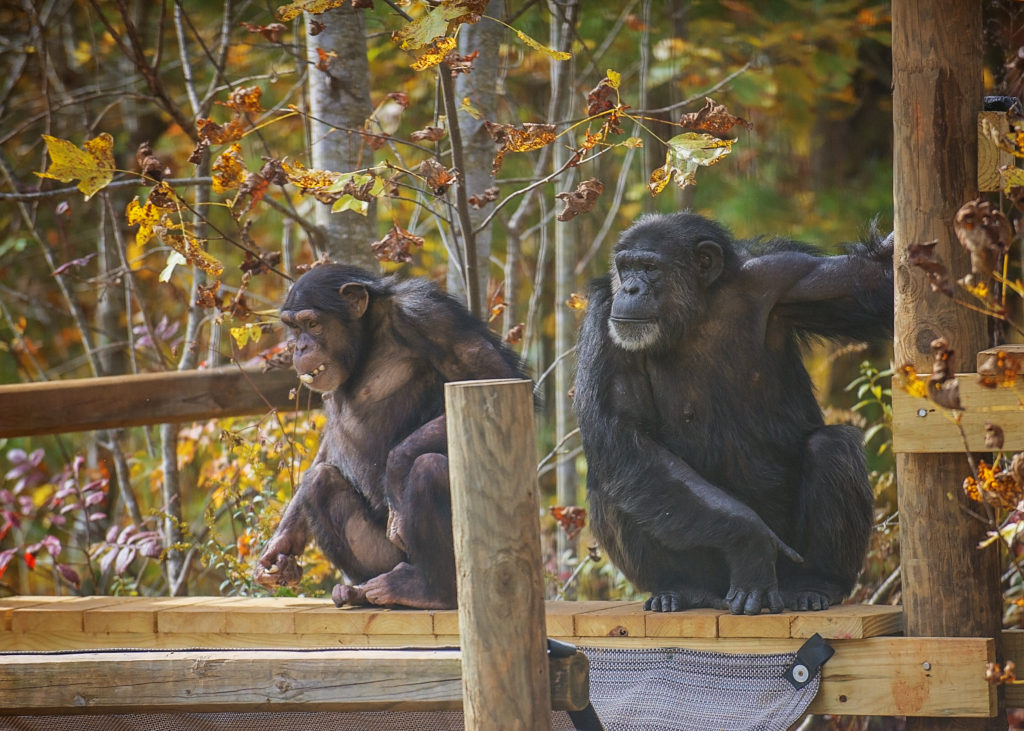
“Arthur put his big body between them as the two females
tried to slap one another around him,” said Allen, adding with a laugh, “It was
like he was trying to stop his mom and girlfriend from squabbling.”
After meeting indoors, Jill, Arthur, Precious, Marlon and
the rest of the Chimps Ahoy troop were ready to venture outdoors together for
the first time. Both groups were familiar with the enclosed forest known as the
Peachtree Habitat. Each group had been outdoors in the habitat many times. But
not together.
Would they all go
out?
Their caregivers wondered if all of the chimps would go out
– even those who seem to prefer the comfort and perceived safety of their
indoor villa.
Arthur is one of those “indoor” chimps. He boldly explored
the habitat on his first opportunity in January, 2018, but has preferred to
stay indoors ever since. Now that he was united with his mother, Jill, and new
friend, Krystal, would he follow them outdoors?
He chose not to, but watched intently as the others went out into the trees and foraged for nuts and seeds scattered on the ground by Mayo’s team.
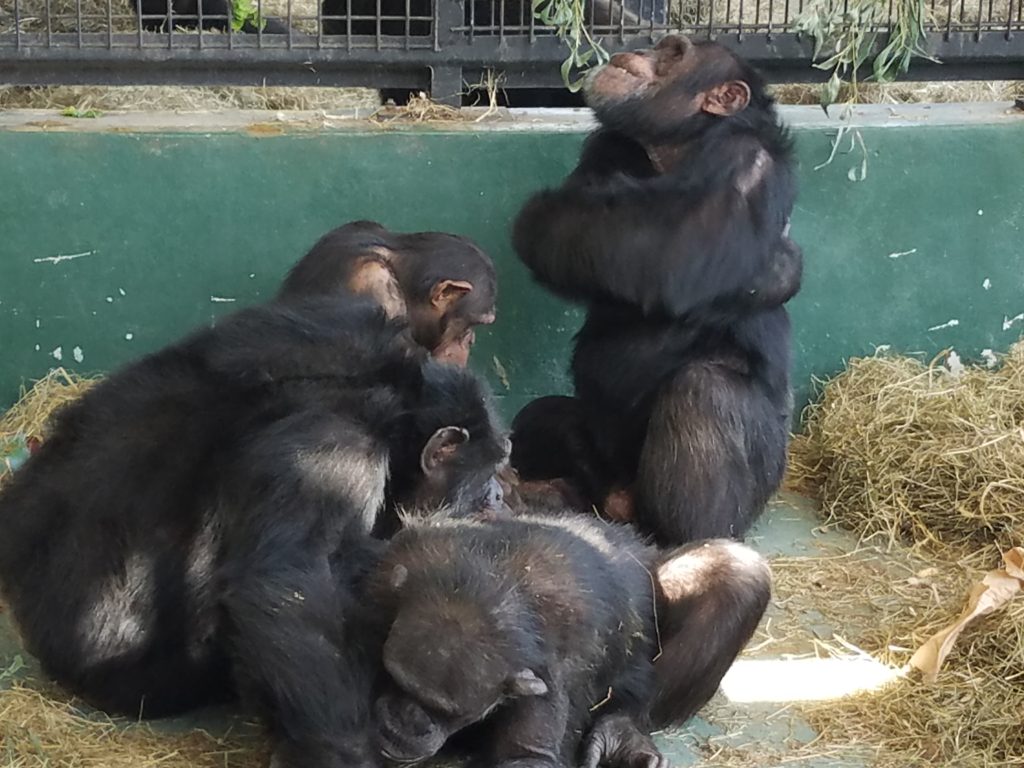
Krystal and Arthur
enjoy the sun
Later, on that sunny day, Krystal came back inside to
reassure Arthur and engage in a grooming session. Together, they watched the
other chimps go in and out, enjoying the sun and their new-found company.
It was another good day in the lives of these 16 chimpanzees
who’d been born and bred for research. It was their time to live.
Today, 59 chimpanzees have a forever home at Project Chimps. The sanctuary is working to bring nearly 150 more from the lab as quickly as possible. You can help by sponsoring a chimp, naming a facility at the sanctuary, making a recurring donation, buying Project Chimps merchandise, or providing a much-needed item from the sanctuary’s Amazon Wish List.
